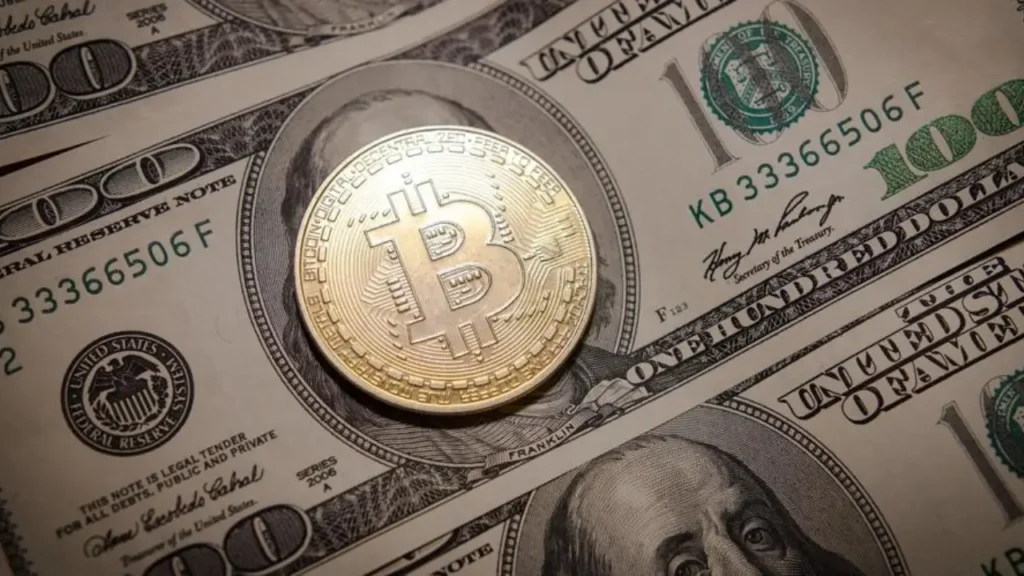In April 2025, Bitcoin (BTC) experienced a remarkable surge, climbing from approximately $74,000 to around $94,000 by mid-month. This significant price movement has captured the attention of investors, analysts, and enthusiasts around the world. Several factors have contributed to this trend, which include institutional adoption, macroeconomic conditions, and regulatory developments.
Table of Contents
Institutional Adoption and ETF Inflows
Bitcoin’s April 2025 surge was largely driven by increased participation from institutional investors. Major financial firms such as BlackRock, Fidelity, and ARK Invest expanded their Bitcoin holdings. The approval and launch of several spot Bitcoin Exchange-Traded Funds (ETFs) made it easier for traditional investors to gain exposure to Bitcoin, leading to substantial inflows. Data indicates that these ETFs have collectively attracted over $40 billion in assets, which signals strong institutional demand.

Macroeconomic Factors and Safe-Haven Appeal
Global macroeconomic uncertainty also played a role in Bitcoin’s price appreciation. Persistent inflation in the U.S. and Europe, coupled with geopolitical tensions, prompted investors to seek alternative stores of value. Bitcoin’s decentralised nature and limited supply have bolstered its reputation as a “digital haven,” attracting both retail and institutional investors during times of economic instability.
Supply Dynamics Post-Halving
The Bitcoin network underwent its most recent halving in March 2024, which reduced the block reward from 6.5 to 3.125 BTC. Historically, such events have led to bullish price trends due to decreased supply. In April 2025, the effects of the halving became more pronounced, with the supply of Bitcoin on exchanges dropping to 1.42 million coins- the lowest level in over six years. This scarcity, combined with rising demand, contributed to upward price pressure.
Regulatory Developments and Government Adoption

Regulatory shifts in the United States further influenced Bitcoin’s surge. In March 2025, President Donald Trump signed an executive order establishing a Strategic Bitcoin Reserve, positioning Bitcoin as a national reserve asset. This move signalled a significant shift in governmental attitude toward cryptocurrencies, potentially governmental attitude toward cryptocurrencies, potentially encouraging other nations to consider similar strategies.
Corporate Treasury Strategies
Corporations have also embraced Bitcoin as part of their treasury strategies. Notably, GameStop invested approximately $513 million to acquire 4,710 BTC in May 2025. This trend reflects a growing confidence among companies in Bitcoin’s long-term value proposition and its potential as a hedge against traditional financial market volatility.
Technical Indicators and Market Sentiment

Technical analysis during April 2025 indicated strong bullish momentum. Key Metrics such as the 50-day and 200-day moving averages showed upward trends, and the Relative Strength Index (RSI) reached overbought levels, suggesting sustained buying pressure. Support and resistance levels were identified at $85,000 and $95,000, respectively, with the psychological barrier of $100,000 in sight.
Conclusion
Bitcoin’s remarkable surge in April 2025 stands as a testament to its evolving role in the global financial landscape. The convergence of institutional adoption, macroeconomic factors, regulatory developments, and supply dynamics has propelled Bitcoin to new heights, underscoring its maturation as a digital asset.

Institutional interest has been a significant driver, with major firms like BlackRock, Fidelity, and ARK Invest expanding their Bitcoin holdings. The approval and launch of spot Bitcoin ETFs have facilitated easier access for traditional investors, leading to substantial inflows and signaling strong institutional demand.
The 2024 halving event, which reduced the block reward to 3.125 BTC, has contributed to a decrease in Bitcoin’s supply on exchanges, intensifying scarcity and supporting upward price pressure.
Their surge is the result of a multifaceted interplay of factors, highlighting its increasing integration into the financial mainstream. As the landscape continues to evolve, Bitcoin’s trajectory will likely be shaped by ongoing institutional interest, macroeconomic developments, regulatory frameworks, and technological advancements.